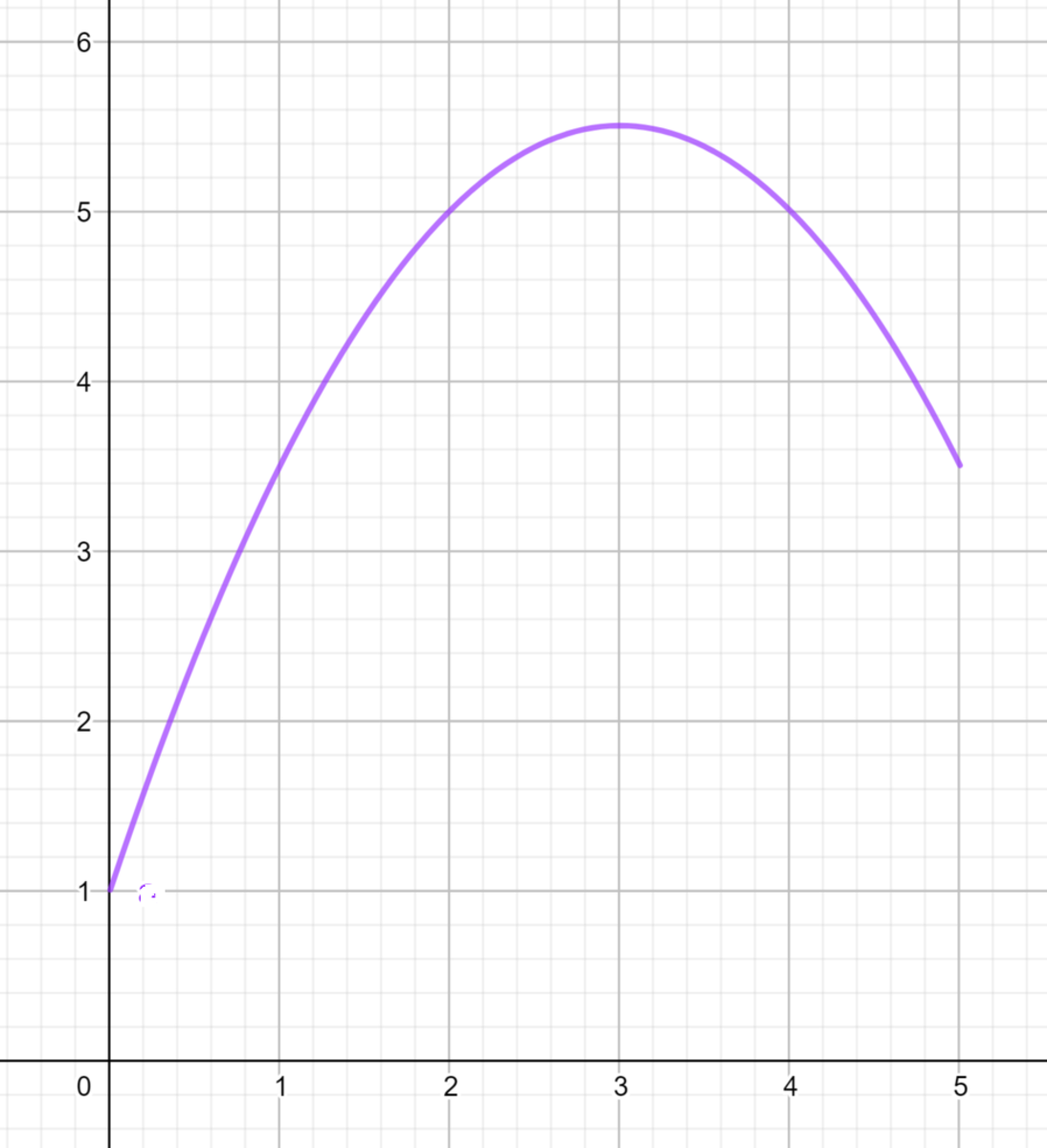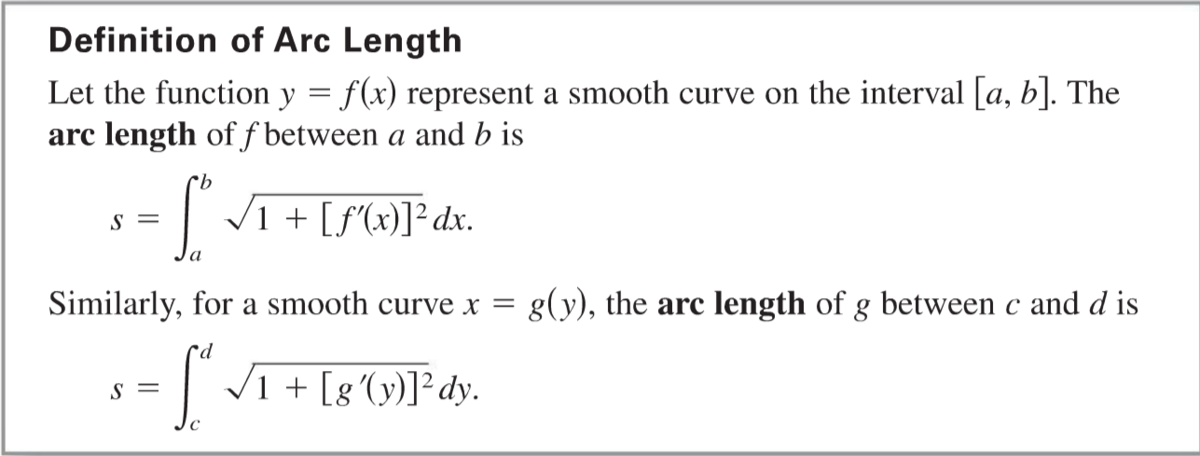Length of Curve

A parabolic function is defined by f ( x ) = − 2 1 x 2 + 3 x + 1 . It is plotted in the figure above over the interval [ 0 , 5 ] . Find the length of the curve of f ( x ) over this interval.
The answer is 8.6105.
This section requires Javascript.
You are seeing this because something didn't load right. We suggest you, (a) try
refreshing the page, (b) enabling javascript if it is disabled on your browser and,
finally, (c)
loading the
non-javascript version of this page
. We're sorry about the hassle.
3 solutions
Nice substitution with sinh, upvoted! Didn't come to my mind - very elegant solution. I substituted with tan.
Log in to reply
Yes, elegant and I learned it from @Pi Han Goh . Check out the reference .
Log in to reply
Or you can try Euler's substitution . (which is not the best substitution here)
Using one of your intermediate steps, we have ∫ 0 5 1 + ( 3 − x ) 2 d x = z = 3 − x ∫ − 2 3 1 + z 2 d z
Let 1 + z 2 = z + t
Squaring both sides gives 1 + z 2 = z 2 + 2 z t + t 2 ⇒ z = 2 t 1 − t 2 ⇒ d t d z = − 2 t 2 t 2 + 1
When
z
=
−
2
,
t
=
2
+
5
.
When
z
=
3
,
t
=
1
0
−
3
.
The integral transforms to ∫ 2 + 5 1 0 − 3 ( z + t ) ⋅ − 2 t 2 t 2 + 1 d t = ∫ 2 + 5 1 0 − 3 ( 2 t 1 − t 2 + t ) ⋅ − 2 t 2 t 2 + 1 d t = − 4 1 ∫ 2 + 5 1 0 − 3 t 3 ( t 2 + 1 ) 2 d t
Continuing on,
4 1 ∫ 1 0 − 3 2 + 5 ( t + t 2 + t 3 1 ) d t = 4 1 [ 2 t 2 − 2 ln ∣ t ∣ − 2 t 2 1 ] 2 + 5 1 0 − 3 = ( plenty of tedious simplication ) = ( the same answer )
HAPPY NEW YEAR
Those integrations are too extreme for me <3
The arc length is given by:
S = ∫ x i n i t i a l x f i n a l 1 + ( d x d y ) 2 d x ⟹ S = ∫ 0 5 1 + ( 3 − x ) 2 d x
Taking z = 3 − x transforms the integral to: S = ∫ − 2 3 1 + z 2 d z Integrating by parts or by trigonometric substitution yields (steps left out): S = 2 1 ( z 1 + z 2 + ln ( z + z 2 + 1 ) ) ∣ ∣ ∣ ∣ − 2 3 ≈ 8 . 6 1 0 5

The curve is given by y = 1 + 3 x − 2 x 2 . The length of the curve for x ∈ [ 0 , 5 ] is given by:
s = ∫ 0 5 1 + ( d x d y ) 2 d x = ∫ 0 5 1 + ( 3 − x ) 2 d x = ∫ sinh − 1 ( − 2 ) sinh − 1 3 1 + sinh 2 t cosh t d t = ∫ sinh − 1 ( − 2 ) sinh − 1 3 cosh 2 t d t = ∫ sinh − 1 ( − 2 ) sinh − 1 3 2 cosh 2 t + 1 d t = 4 sinh 2 t + 2 t ∣ ∣ ∣ ∣ sinh − 1 ( − 2 ) sinh − 1 3 = 2 sinh t cosh t ∣ ∣ ∣ ∣ sinh − 1 ( − 2 ) sinh − 1 3 + 2 1 ln ( 5 − 2 3 + 1 0 ) = 2 3 1 0 + 2 5 + 2 1 ln ( 5 − 2 3 + 1 0 ) ≈ 8 . 6 1 Let 3 − x = sinh t ⟹ − d x = cosh t d t Since cosh 2 z − sinh 2 z = 1 Note that sinh − 1 z = ln ( z + z 2 + 1 ) and sinh 2 z = 2 sinh z cosh z and cosh 2 z − sinh 2 z = 1